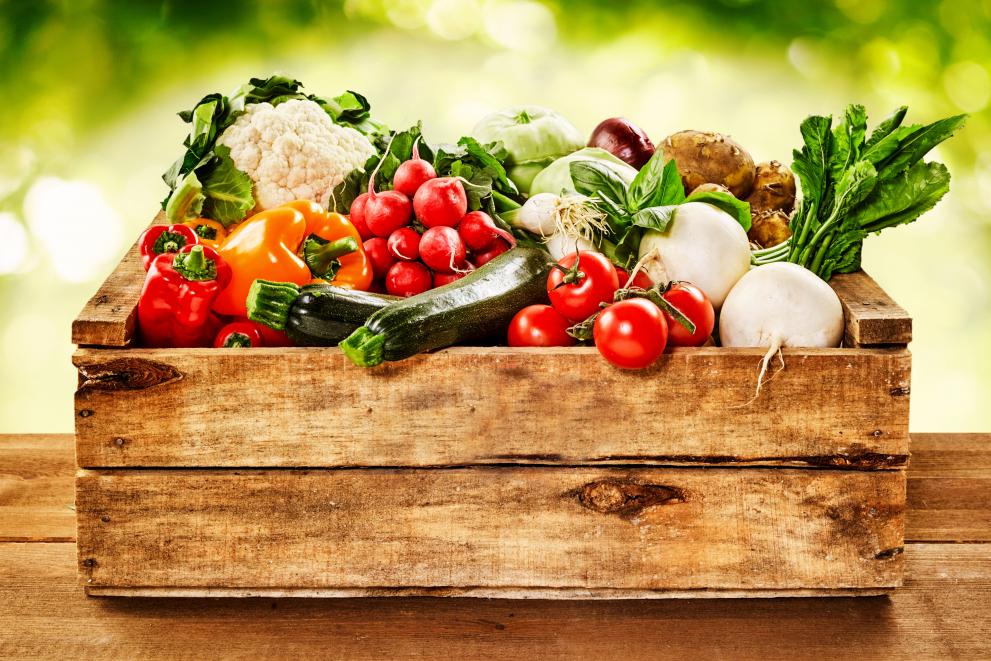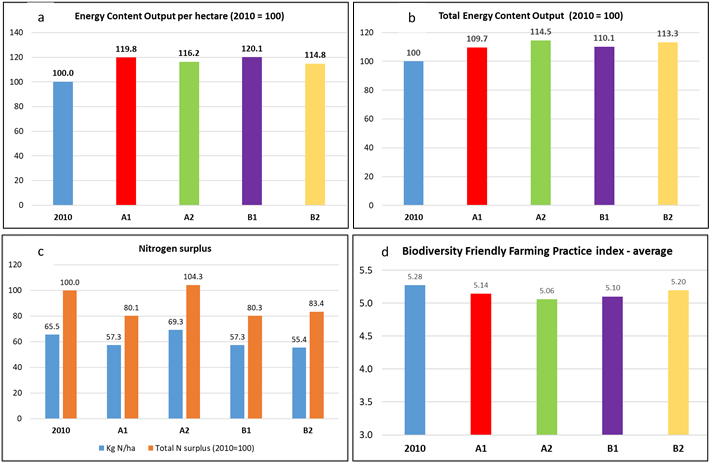
A recent JRC-led article compares four different policy scenarios for EU agricultural production in 2040 and their respective impacts on European environment and biodiversity.
Results show that, if appropriate land use and land management choices are put in place today, Europe could maintain its current agricultural production levels in 2040 whilst halting harm to environment and biodiversity.
Food security and environmental sustainability create trade-offs in land use: the intensification of agricultural activities not only harms future land productivity and in turn agricultural trade and market prices, but can also negatively affect the quality of landscapes, air, water and soil.
The EU faces a major challenge of ensuring that EU agricultural production is sustainable enough to satisfy the needs of a rapidly increasing population and at the same time is not detrimental to the long-term functioning of fundamental ecological processes.
The four ‘What-if’ scenarios examined by the JRC in this publication not only inform policymakers on future food supply trends for 2040, but also provide insights on the potential impacts of different land management choices on biodiversity conservation, land productivity and environmental protection.
The findings are the result of a long process involving sectoral experts from the public and private sectors, as well as of a complex modelling exercise using the JRC’s Common Agricultural Policy Regionalised Impact (CAPRI) model.
The exercise combines high spatial resolution land use and land cover change data with a series of factors influencing EU food supply and demand, such as climate change, population and economic growth, retrieved from external models. Scenarios were elaborated from the Intergovernmental Panel on Climate Change (IPCC) global scenarios and adapted to the European context, for example, to estimate demographic and climate-related trends for 2040.
A plethora of alternative policy options (e.g. global free trade policies versus a strong implementation of the new Common Agricultural Policy (CAP)) that influence the performance of EU agricultural production systems could be implemented in the coming decades. The four scenarios are, thus, more or less likely to occur.
Their predicted effects provide insights on what could happen to areas such as agricultural markets, agricultural businesses (small, medium and large), crop production and farm-related biodiversity.
Comparing the different scenarios
The first scenario, A1, features a completely liberalised economy where CAP support to farming is abolished. Urban areas expand significantly to the detriment of agricultural land. Environmental and land-use regulations are lessened.
In the second scenario, A2, the EU loses centrality and Member States have high discretionary power in defining their agricultural and land use policies. Protectionist measures are in place with regard to agricultural commodities, CAP support is maintained with the policy supporting land specialisation, and land use regulations are weakened.
In the third scenario, B1, CAP support is abolished as in A1, but measures are established to compensate farmers for the delivery of public goods. Strong regulations on land use and climate change mitigation are in place, and improvements in agricultural efficiency are supported.
In the last scenario, B2, CAP subsides are maintained, but redesigned in such a way as to promote agricultural diversification (rather than specialisation) and local multifunctionality. Strict environmental policies and regulations on land use changes are in place.
Major findings highlight trade-offs and win-win solutions
Three main indicators were computed for each scenario: agricultural production, measured through the energy content of the output per ha of agricultural land (Figure 1a) and the absolute values for the whole EU (Figure1b), Nitrogen surplus (a measure of environmental impact – Figure 1c), and a Biodiversity Friendly Farming Practice index, a measure of the overall “friendliness” of agriculture with respect to farmland biodiversity (Figure 1d).
Interestingly, scenarios that yield the highest total production are A2 and B2. However, the A2 scenario would result in the highest nitrogen surplus (approx. 69 Kg/ha per year) and performs poorly in terms of biodiversity ‘friendliness’ due to landscape simplification.
The A1 and B1 scenarios would have the highest per hectare output and highest efficiency in the use of input, but abolishment of support would phase out many small businesses from the market (due to high competition and prices for land), which would lead to reduced total agricultural. It would also be less beneficial for biodiversity.
The B2 scenario seems to provide a win-win solution: not only does it show the lowest environmental ‘cost’ in terms of both biodiversity losses and nitrogen surplus, but it would also benefit small-medium businesses, concentrated in peripheral areas, which also have the highest biodiversity potential. The overall production would be very similar to A2 (the highest one).
Scientists also clarified that, “Non-intense and diversified agricultural landscapes have a high potential to support biodiversity, because they contain cropping systems of high natural value that interact positively with their surroundings, thus activating precious natural processes for biodiversity conservation.”

Win-win solutions are possible
Overall, in line with both the EU Biodiversity Strategy for 2020 and the long-term objectives of the CAP, the article shows that the most effective land use policies for achieving high biodiversity protection and food production goals in the long term are those that involve high diversification of landscapes and services and provide support to farming, especially when directed towards small-medium sized business.
Further information
- Environmentalism and localism in agricultural and land-use policies can maintain food production while supporting biodiversity. Findings from simulations of contrasting scenarios in the EU
- Common agricultural policy (CAP)
- EU Biodiversity Strategy
Related Content
Details
- Publication date
- 30 October 2019
